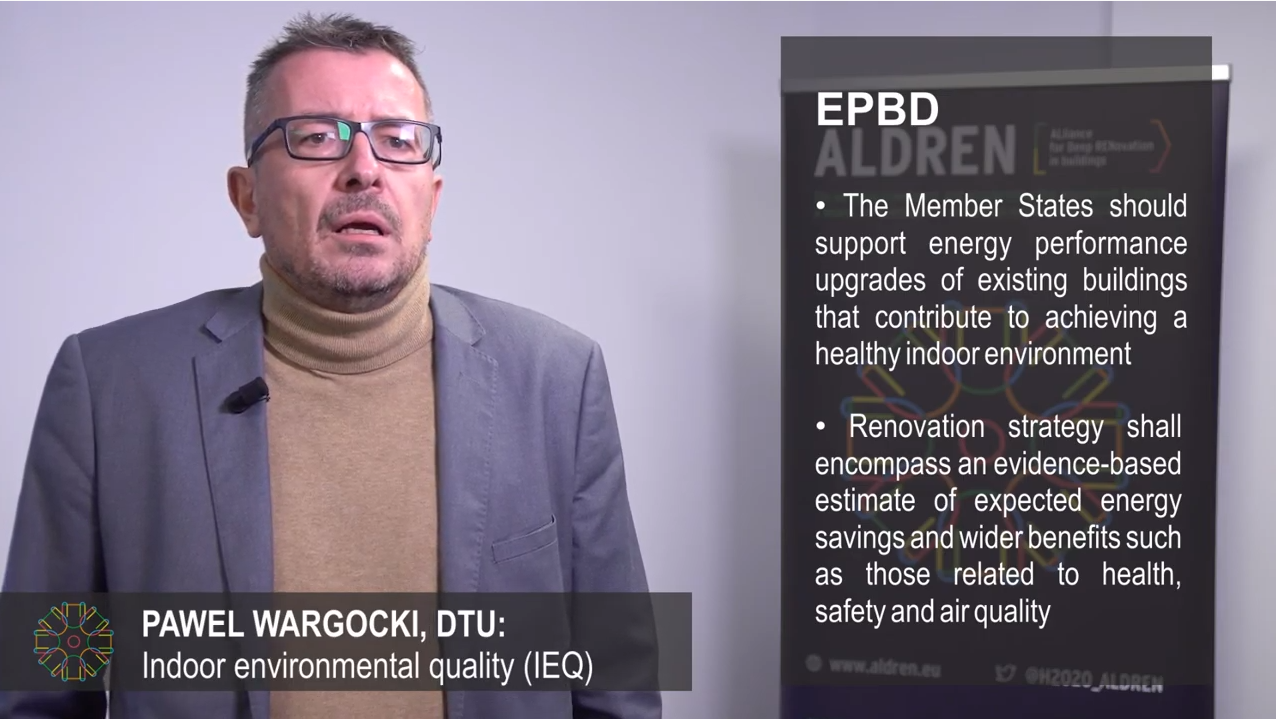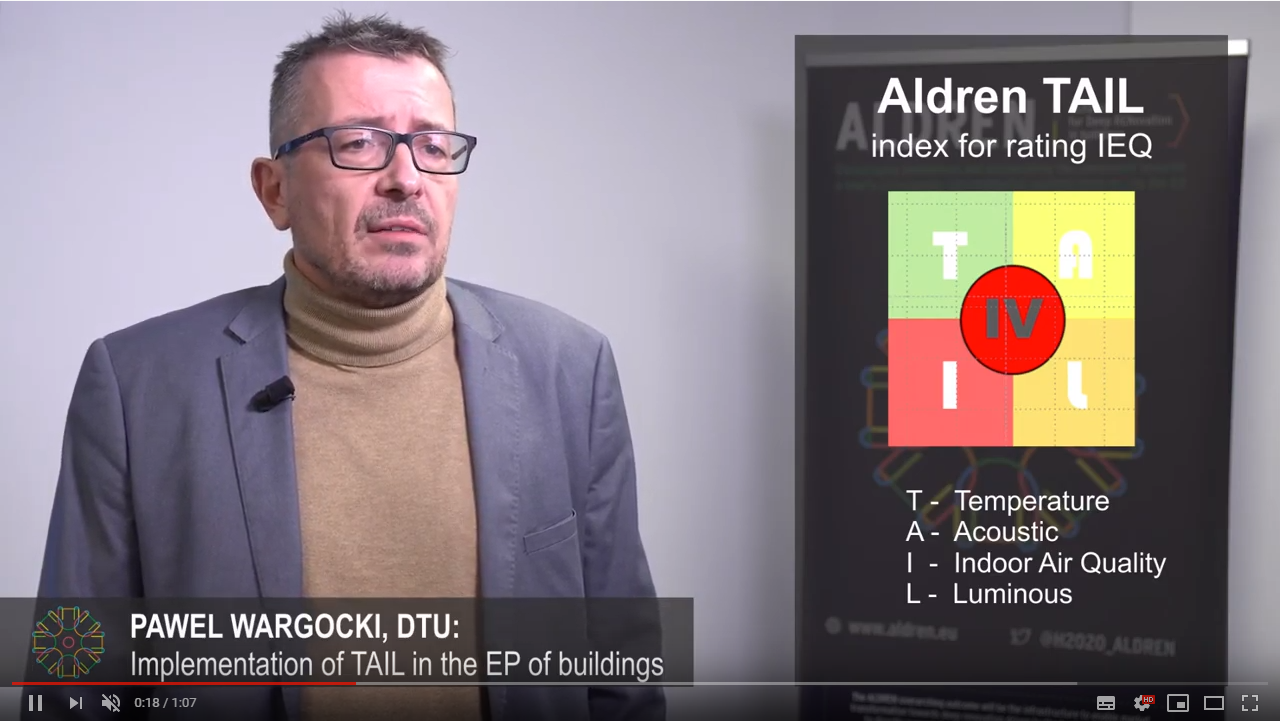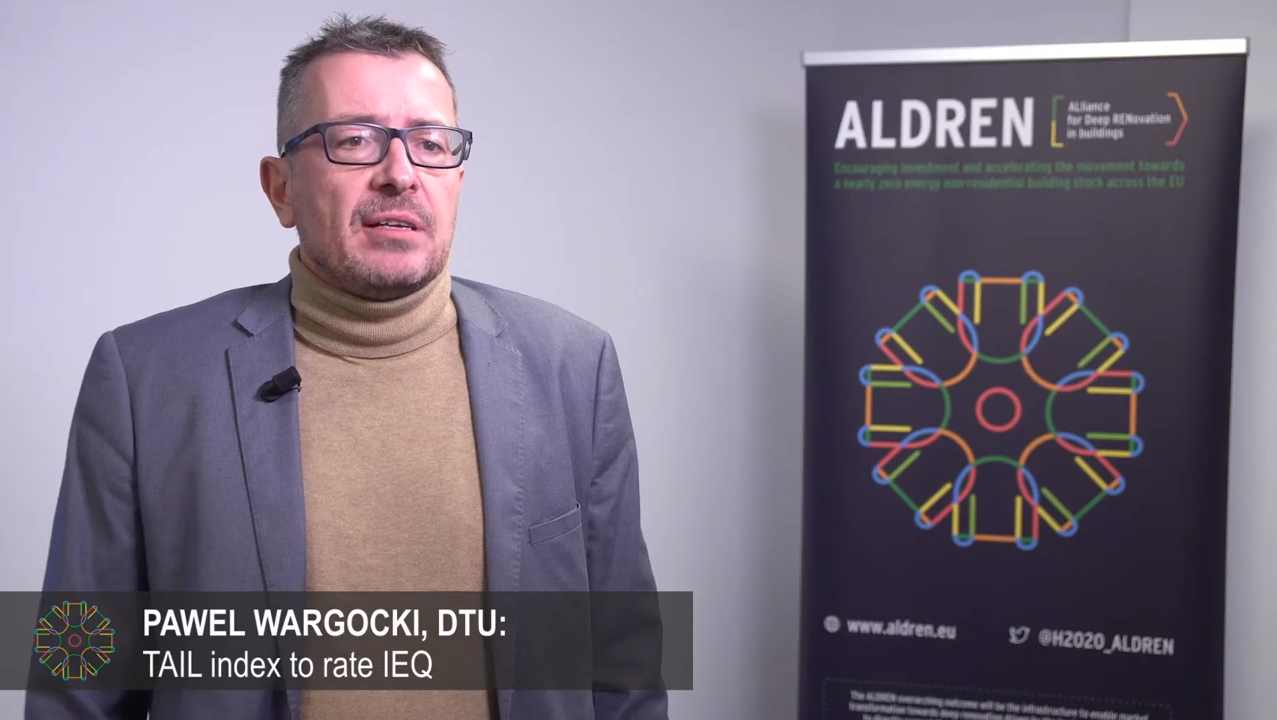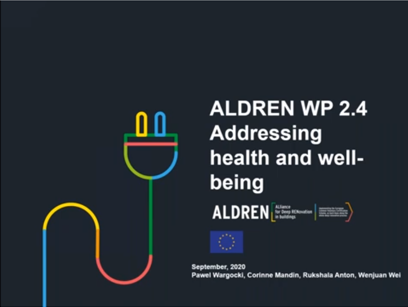COMFORT & WELL-BEING

A health and well-being assessment protocol. It is based on an index called ALDREN-TAIL to rate the Indoor Environment Quality (IEQ) of buildings undergoing deep renovation, focusing on 4 key components: Thermal environment (T), Acoustic environment (A), Indoor air quality (I), Luminous environment (L). TAIL ratings can and should be evaluated before and after renovation.
ALDREN project developed an index that allows rating of Indoor Environmental Quality (IEQ) in buildings that are in operation and undergo Deep Energy Renovation (DER) as well as a method for predicting IEQ during the design of DER. The former is called ALDREN-TAIL, in short TAIL, the latter is called predicTAIL. In both cases, TAIL describes four components of IEQ, i.e., thermal environment (T), acoustic environment (A), indoor air quality (I), and luminous (visual) environment (L), as well as the overall quality of the environment.

TAIL index
The TAIL index consists of 12 parameters describing IEQ. For each parameter, four ranges are defined describing their four quality levels aligned with the quality levels included in the standard EN16798-1. The four quality levels of the 12 parameters and the four IEQ components defining the ALDREN-TAIL index are depicted with one of the four colors: green representing high-quality level, yellow indicating medium quality level, orange showing moderate quality level, and red representing low-quality level.
The Roman numbers indicate the overall IEQ level, i.e., I, II, III, and IV, corresponding respectively to green, yellow, orange, and red quality levels (Figure 1). The twelve parameters are determined before and after energy renovation using measurements in buildings, observations (only visible mold), or simulations (only daylight factor). The detailed protocol for measurements has been developed. The quality level of each component of TAIL and the overall IEQ level is determined by the lowest quality to create incentives for improvement and not to compromise any of the major components of IEQ.
Predicting TAIL index: PredicTAIL
Because the TAIL index should guarantee a good IEQ after the energy renovation, it must also be possible for the building owners or investors to assess what could be the influence of the different renovation actions on IEQ. For this purpose, the predicTAIL index was created. PredicTAIL includes the same IEQ parameters, the same quality levels and the same calculation method as TAIL, but is purely based on modeling. PredicTAIL is modeled before renovation to serve as the baseline, and then it is modeled for different renovation strategies. By comparing PredicTAIL after with PredicTAIL before energy renovation, the best renovation strategy can be chosen. PredicTAIL is an additional tool for decision making and is not a verification tool for TAIL. Both should be used independently.
Conclusions
TAIL creates an incentive to improve IEQ as well as the framework that allows qualitative and quantitative assessment of non-energy benefits resulting during the process of a deep energy retrofit. The TAIL index focuses on office and hotel buildings to be aligned with the ALDREN procedure, but the intention is to use it in any type of building.
Being measured before the renovation, the TAIL index helps to identify the possible components to be improved on the occasion of the energy renovation, making the latter even more beneficial for the building and its occupants. In case of measurements done after the energy renovation, the TAIL index ‘after’ compared to the TAIL index ‘before’ helps in showing that the renovation has not degraded the IEQ in the building or whether the IEQ improved.
ALDREN PROJECT

© ALDREN. All rights reserved. Any duplication or use of objects such as diagrams in other electronic or printed publications is not permitted without the author’s agreement.
Read our LEGAL NOTICE – PRIVACY POLICY – COOKIE POLICY.





